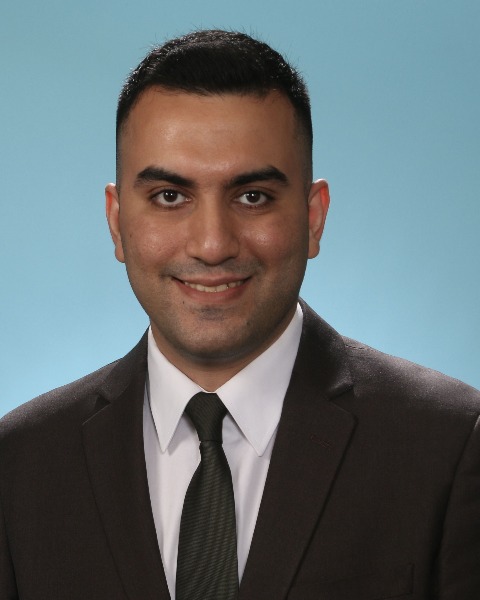Thoracic
P22: Tumor-associated Fibrosis leads to an increase in T-cell exhaustion and Impairs Tumor Control in Non-Small Cell Lung Cancer.

Usman Y. Panni, MD
Resident physician
Washington University in St. Louis
St. Louis, Missouri, United States
Usman Y. Panni, MD
Resident physician
Washington University in St. Louis
St. Louis, Missouri, United States
Usman Y. Panni, MD
Resident physician
Washington University in St. Louis
St. Louis, Missouri, United States- VS
Varun Shenoy, BS
Research Assistant
Washington University in St. Louis, United States - BK
Brett Knolhoff, BS
Research Assistant
Washington University in St. Louis, United States - FA
Faiz Ahmed, BS
Research Assistant
Washington University in St. Louis, United States - BH
Brett Herzog, MD PhD
Assistant Professor
Washington University in St. Louis, United States - WH
William Hawkins, MD (he/him/his)
Deputy Director, Hollings Cancer Center
Medical University of South Carolina
Charleston, South Carolina, United States - JO
John A. Olson, MD PhD
Professor
Washington University in St. Louis
St. Louis, Missouri, United States - DD
David G. DeNardo, PhD
Professor
Washington University in St. Louis
St. Louis, Missouri, United States
Oral Poster Presenter(s)
Submitter(s)
Author(s)
Lung cancer is the leading cause of cancer-related mortality, with NSCLC being the most predominant type. Recent studies have shown the efficacy of anti-PD1 inhibitors which improved overall survival. However, this efficacy is limited to a subset of patients due to the intrinsic tumor resistance to immune checkpoint inhibitors. An in-depth analysis of the immune microenvironment to explore mechanisms of resistance to checkpoint inhibitors is an unmet need. We recently demonstrated that tumor-associated fibrosis negatively correlates with T cell-mediated immune response in lung cancer. This is largely dependent on Col13a1-expressing cancer-associated fibroblasts (CAFs), which result in recruiting the immunosuppressive macrophages and regulatory T cells and limit dendritic cells and CD8 T cell infiltration. Here, we characterize the effect of fibrosis on the tumor immune microenvironment including T cell infiltration and macrophages using a KRAS and P53-driven murine NSCLC model.
Methods:
An orthotopic NSCLC model was established by implanting a KPL86-mCher cell line derived from KrasLSL-G12D/p53flox/+ mice, into C57BL/6 mice. A single dose of FITC was intratracheally administered 2 days after implantation which induces tumor fibrosis in our animal model mimicking fibrotic TMEs of human tumors. Mice were treated with a combination of Carboplatin, Pemetrexed, and anti-PD1 for 10 days. Immunohistochemistry and flow cytometry assessed tumor burden and immune cell populations.
Results:
Induction of fibrosis using FITC significantly increased the number of CAFs and collagen density in KPL86-mCher lung tumors (Figure 1A). Following chemo/immunotherapy, we observed no increase in tumor-infiltrating CD4+ and CD8+ T cells or decrease in tumor burden when compared with the non-fibrotic tumors (Figure 1B). Rather, we observed a significant increase in exhausted T cells marked by high Tim3, PD1, and TOX (Figure 1C) in fibrotic KPL86-mCher tumors. Corresponding to these impaired T-cell responses, we found an increase in tumor-infiltrating alveolar macrophages with immunosuppressive phenotype under fibrotic tumor conditions (Figure 1B).
Conclusions:
Our data suggests that tumor-associated fibrosis leads to an increase in CD8+ T cell exhaustion as well as immunosuppressive macrophage infiltration in our spontaneously derived murine NSCLC model. Overall, this indicates that targeting tumor fibrosis may significantly improve the efficacy of immunotherapy which would have translational implications for patients with immunotherapy-resistant NSCLC.
Learning Objectives:
- Describe the role of fibrosis in inducing an immunosuppressive tumor microenvironment in cancer.
- Describe the role of fibrosis in generating resistance against anti-tumor T cell response.
- Describe the mechanisms of immunotherapy resistance in cancer secondary to fibrosis.
